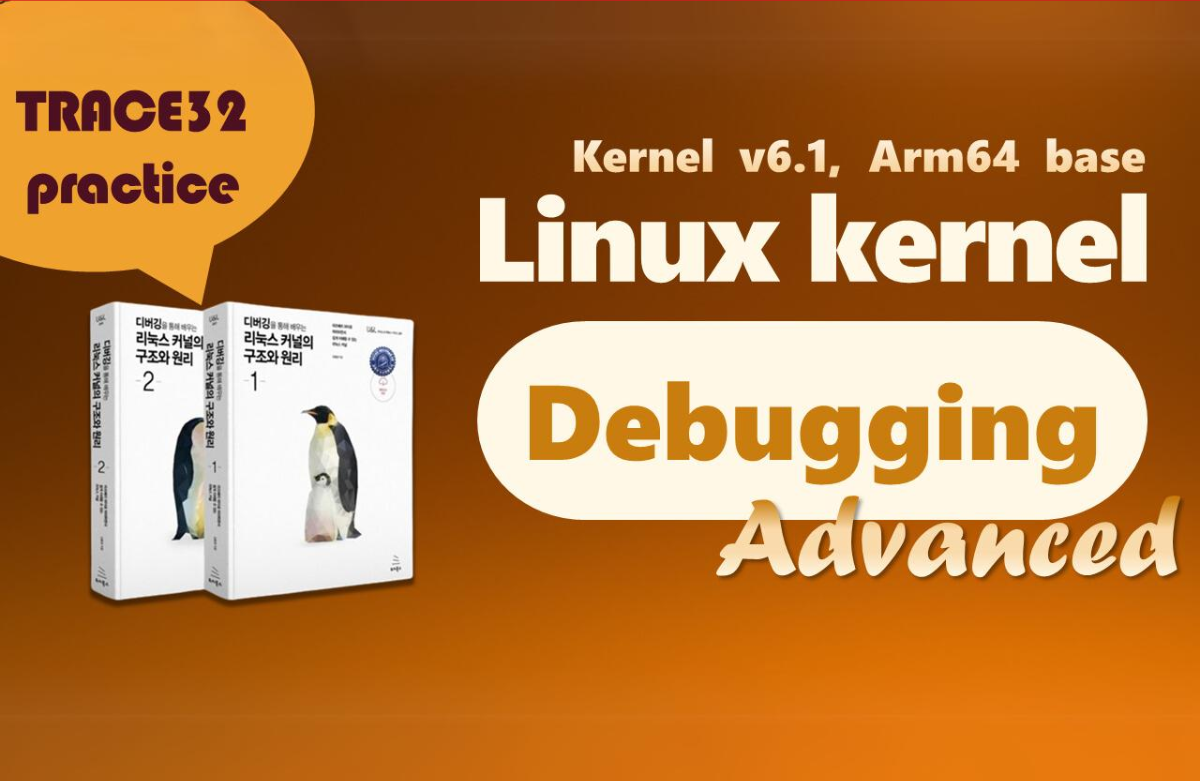![리눅스 커널의 구조와 원리: 인터럽트 [저자 직강 1부-5]강의 썸네일](https://cdn.inflearn.com/public/courses/333194/cover/79593ea5-0a6d-453a-8ead-a54103462943/333194.png?w=420)
리눅스 커널의 구조와 원리: 인터럽트 [저자 직강 1부-5]
김동현 (Austin Kim)
시스템 소프트웨어에서 가장 많이 쓰이는, 최신 리눅스 커널(v6.1)의 인터럽트 핵심 개념을 "디버깅을 통해 배우는 리눅스 커널의 구조와 원리"의 저자가 제대로 설명합니다.
초급
운영체제, Linux, linux-kernel
The author of "디버깅을 통해 배우는 리눅스 커널의 구조와 원리" properly explains the most advanced kernel memory dump debugging skills for the latest Linux kernel (v6.1), most widely used in system software.
305 learners

Debugging Linux kernel memory dump with TRACE32 and Crash Utility programs
Various case studies you might encounter during real-world project development
boot-time ftrace tracer
Run the Crash Utility program to debug the Linux kernel's key data structures
Run TRACE32 to debug Linux kernel's key data structures.
Who is this course right for?
Junior developer wanting to build skills in system software, including system semiconductors and EV (autonomous driving, infotainment).
Aspiring job seeker for system software development in system semiconductor and electric vehicle fields.
Undergraduate student aiming for graduate school in system software (memory, file system, OS)
Cross-domain developer seeking system software career change
Need to know before starting?
Operating System
C language
Computer Architecture
6,010
Learners
198
Reviews
89
Answers
4.9
Rating
22
Courses
글로벌 저자 & 리눅스 시스템 소프트웨어 개발자 (Arm, RISC-V 아키텍처)
국내 시스템 소프트웨어 분야에서 전무후무한! 'Arm 아키텍처(Armv8-A, Armv7-A)'와 '리눅스 커널' 책을 쓴 저자(2권의 책 모두 대한민국 학술원 우수도서에 선정)이며, 국내 최초로 해외 출판사(Packt)를 통해 "Reverse Engineering Armv8-A Systems" 책(영어)을 집필한 글로벌 저자입니다. 무엇보다 최신 시스템 소프트웨어 트렌드(전기자동차, 시스템 반도체- 시스템 소프트웨어)를 가장 잘 알고 있는 현업 개발자입니다. 또한 시스템 소프트웨어 분야에서 가장 지식 전파 활동을 활발하게 하는 교육자입니다.
'Reverse Engineering Armv8-A Systems: A practical guide to Kernel, Firmware, and TrustZone analysis' 책(영어) 저자, (Packt 출판사)
'시스템 소프트웨어 개발을 위한 Arm 아키텍처의 구조와 원리'(2024년, 대한민국 학술원 우수도서상) 저자
'디버깅을 통해 배우는 리눅스 커널의 구조와 원리' (2021년, 대한민국 학술원 우수도서상) 저자
'프로그래머스 데브 코스: 리눅스 시스템 및 커널 전문가' 메인 강사
2022년 6월, 한국컴퓨터종합학술대회 (KCC2022) - 튜토리얼 발표 [ftrace를 이용해 리눅스 커널 정복하기]
LG전자 '리눅스 커널' 및 'Armv8 아키텍처' 사내 강사(국내 및 해외 개발자 포함) - (2020년~현재)
국내에서 어느 누구보다 리눅스 커널과 Arm 아키텍처(Armv8-A, Armv7-A)를 잘 설명할 수 있는 교육자라고 자신있게 말씀드릴 수 있습니다.
강의문의 : austindh.kim@gmail.com
'시스템 소프트웨어 개발자를 위한 Arm - basic course'
All
42 lectures ∙ (5hr 39min)
Course Materials:
All
12 reviews
5.0
12 reviews
Reviews 112
∙
Average Rating 5.0
5
2024/07/30/화 20:25 강의 잘 들었습니다. 지금 김동현님의 로드맵 강의를 다 들었네요. 모든 강의는 새로운 정보와 지식을 제공하고, OOM(out of memory)에서 15일 정도 해결 시간을 잡으라는 말씀에 또 감명을 받았습니다. 직접 경험하신 얘기도 많이 해 주시고, 어려운 linux/arm 에 대해서, 쉽게 설명해 주셔서 감사합니다. 현재 제 나이는 50(75년생)이네요. T.T 젊었을 때, 리눅스 책도 참 많이 사고, 뭔가 노력도 많이 했었는데, 아무런 진도가 되지 않았는데, 김동현님의 강의를 듣고, 정말 많이 알게 되었습니다. 주말에만 시간이 나다가 이번주에 연차를 사용해서 지금 강의를 다 들었습니다. 27일 토요일 부터 지금 까지 너무 급하게 다 들어서, 다시 들어야 할 것 같네요.^^; 수강기간:무제한으로 해 주셔서, 1년 후에도 다시 듣고 싶으면 계속 들을 것 같습니다. 이제 ebook 으로 산 linux/arm 책을 꼼꼼히 읽어 보려고 합니다. 제가 글 제주가 없어서, 제가 느낀 마음을 전달 해 드릴 수가 없네요. 이제 linux에 대해서 조금씩 진도를 나갈 수 있다는 생각이 듭니다. 좋은 강의 감사드립니다. 앞으로도 강의 만드시면, 잘 듣겠습니다. 즐거운 하루 보내세요. 감사합니다.
Reviews 3
∙
Average Rating 5.0
Reviews 4
∙
Average Rating 5.0
Reviews 2
∙
Average Rating 5.0
Reviews 9
∙
Average Rating 4.9
$42.90
Check out other courses by the instructor!
Explore other courses in the same field!